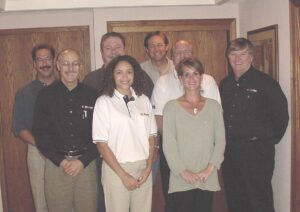After spending more than two decades in pursuit of the grand mission of an open access, public benefit broadband network serving customers statewide, I am retiring as CEO of NoaNet this month. It has been a wonderful, challenging, complex, and inspiring ride. I leave with the confidence and assurance that NoaNet is in great hands moving forward. Our staff is committed to customer service excellence, professionalism, and the mission to help bridge the digital divide. And our owners, local public utility districts, and Energy NW govern NoaNet wisely with an eye on financial sustainability.

The Northwest Open Access Network is now a thriving reality that touches every county in Washington State with a world-class telecom fiber optic backbone. I have come to think of the network as a virtual broadband freeway. Our customers use NoaNet, along with a host of other open-access networks, to reach into communities to serve the state’s next-generation 911 system, rural libraries, hospitals, schools, cell towers, businesses, and residences. Broadband is extended from the NoaNet off-ramps into rural and underserved communities, much like our highway system has main roads and side streets off freeway exits. Today we have paths that carry 400Gbps transmissions across the state in milliseconds, which is a far cry from the 10Mbps circuits we used to be so proud of when we were getting started in 2000. Today, we can send the digital equivalent of the library of congress across the network in a literal blink of an eye.
NoaNet has shown that an open-access broadband network operating as a public entity can be successful. We work with privates and publics alike, buying and selling broadband connections for the final mile to homes and businesses, all while operating and sustaining a 3,300-mile ultra-reliable high-speed backbone. We are a collaborative business with a public mission at heart: to bring on-ramp access to broadband superpipes for communities across the state.
And here’s the thing— the pace of telecom innovation is not slowing down—it is gaining speed. The things that will be possible in the next 20, 30, 40 years have yet to be imagined. Washington citizens will one day have the ubiquitous GigE broadband access we are striving for today. Schools, businesses, government organizations, citizens, and local economies are being transformed by high-speed to access our digital world. What we have started at NoaNet, and the work being done by public utility districts, cellular carriers, cable companies, internet service providers, and public entities, will continue to grow in magnitude and importance for decades to come.

Washington will remain a leader in broadband connectivity by acknowledging that speed requirements are ever-growing, that the goalposts continue to move. As hundreds of millions of dollars are spent in the state for broadband infrastructure over the next five to ten years, investment is made with these future bandwidth needs in mind. We have current access needs to be met: so many are without even minimal broadband access. Yet we also have an opportunity to deploy the highest capacity and longest-lasting networks possible. Open access networks allow the broadband infrastructure to be built once and used by many. It works for our highway networks, and it works for our broadband networks!
I am confident that NoaNet, alongside public and private carriers, will continue to innovate and persevere through this challenging and momentous task. We’ll see to fruition the possibility and promise of life-enriching broadband access for every citizen.
It has been the ride of a lifetime to serve Washington State. Thank you for the opportunity and I cannot wait to see what happens next!
-Dave

